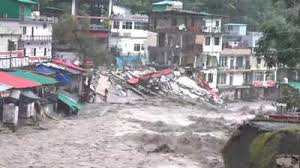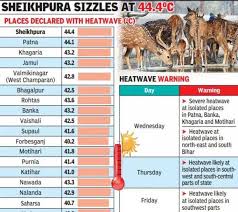Dehradun District Floods: Impact and Recovery Efforts

Introduction
In recent weeks, Dehradun district has been grappling with severe flooding due to unprecedented rainfall and overflowing rivers. This natural calamity has not only led to extensive property damage but has also resulted in significant disruptions to daily life. Given the increasing frequency and intensity of such climate events, understanding the causes and impacts of these floods is essential for local residents, policymakers, and environmentalists alike.
The Current Situation
As of mid-October 2023, heavy rainfall has been recorded across Dehradun, leading to an alarming rise in water levels in rivers such as the Bindal, Ganga, and their tributaries. The State Disaster Response Force (SDRF) has been actively engaged in rescue operations, evacuating those stranded in inundated areas, particularly in neighborhoods like Raipur, Vikasnagar, and Doiwala.
Local authorities have reported damage to infrastructure, including roads, bridges, and irrigation systems. According to preliminary assessments, more than 1,000 homes have been affected, forcing residents to seek temporary shelter in schools and community centers set up as relief camps. The government’s immediate response has included the distribution of food, potable water, and medical supplies to those in need.
Environmental Concerns
Experts attribute the severity of the floods not only to heavy rainfall but also to deforestation and unregulated urban development in the region. The continuous removal of trees has contributed to soil erosion and depleted natural water retention capacities, exacerbating flooding risks. As Dehradun increasingly faces climate-related challenges, sustainable development initiatives are needed to mitigate future disasters.
Looking Forward
According to the India Meteorological Department (IMD), the region may continue to experience erratic weather patterns, indicating potential for further rainfall in the coming weeks. The Uttarakhand government has announced a multi-pronged approach to flood management, focusing on upgrading infrastructure, enhancing drainage systems, and reforestation efforts. Additionally, the State is calling for increased community engagement in flood preparedness training.
Conclusion
In conclusion, the ongoing floods in Dehradun district highlight the urgent need for proactive measures to address climate change and improve disaster resilience. While immediate relief efforts are underway, the long-term recovery and sustainable management of resources will be essential in safeguarding the lives and livelihoods of residents. As citizens remain vigilant and responsive in the face of natural disasters, collaboration between government agencies, NGOs, and local communities will be vital for rebuilding and reinforcing the region’s capacity to withstand future flooding events.









